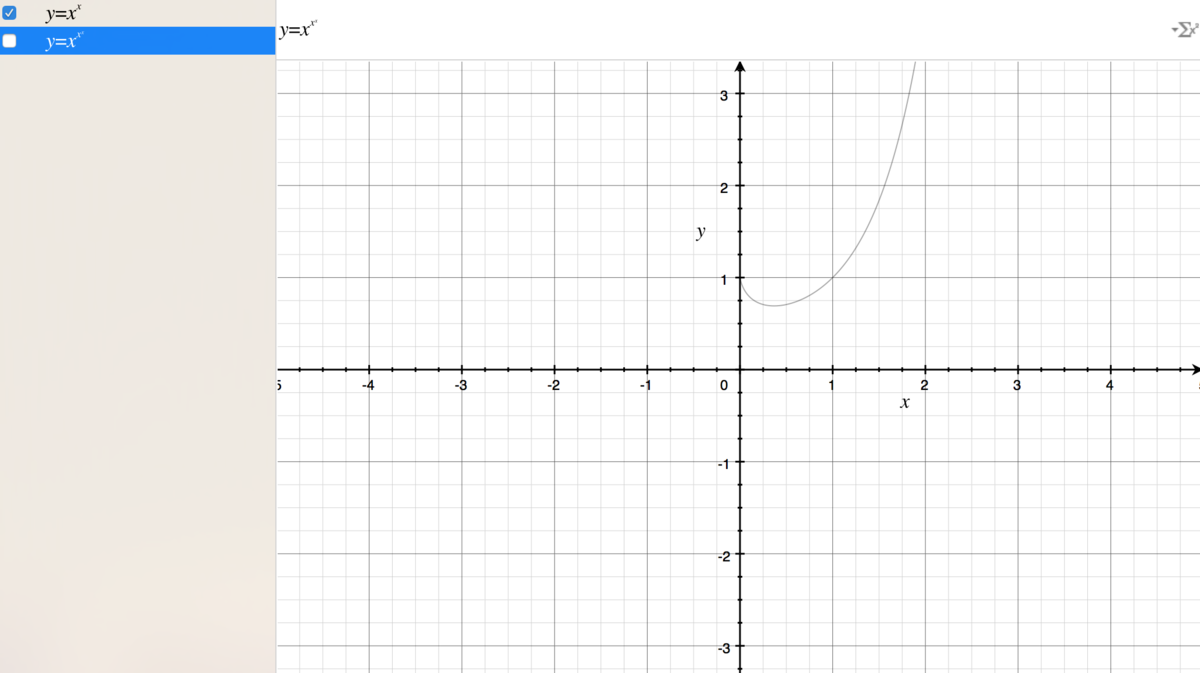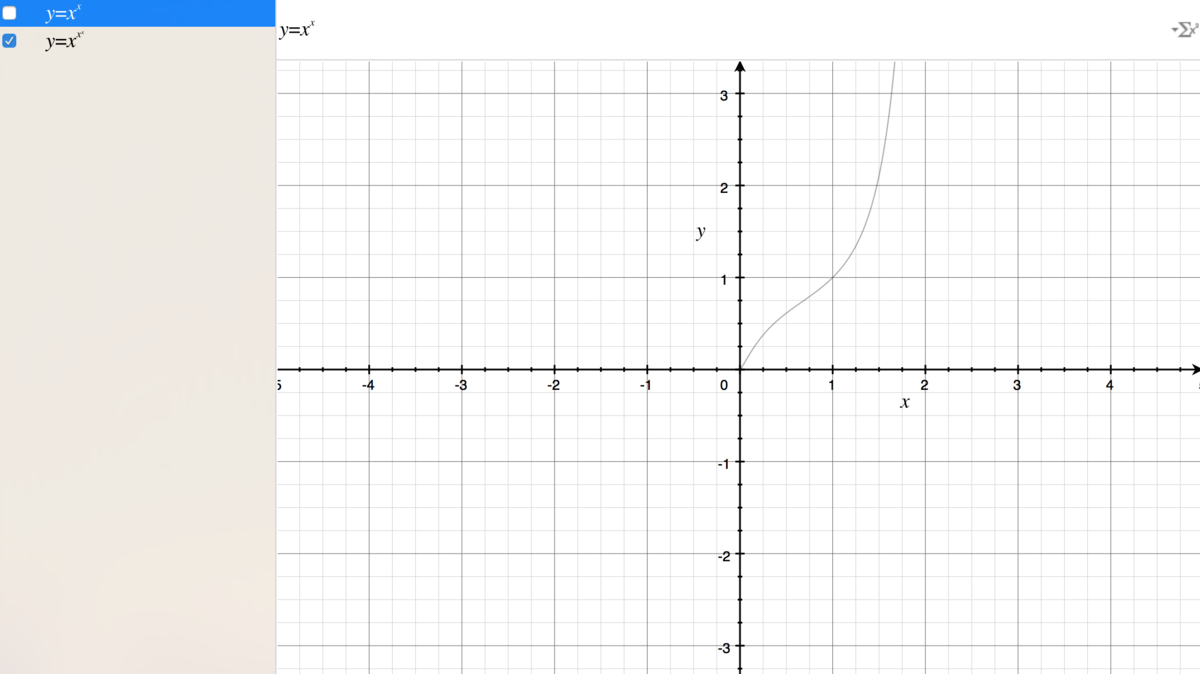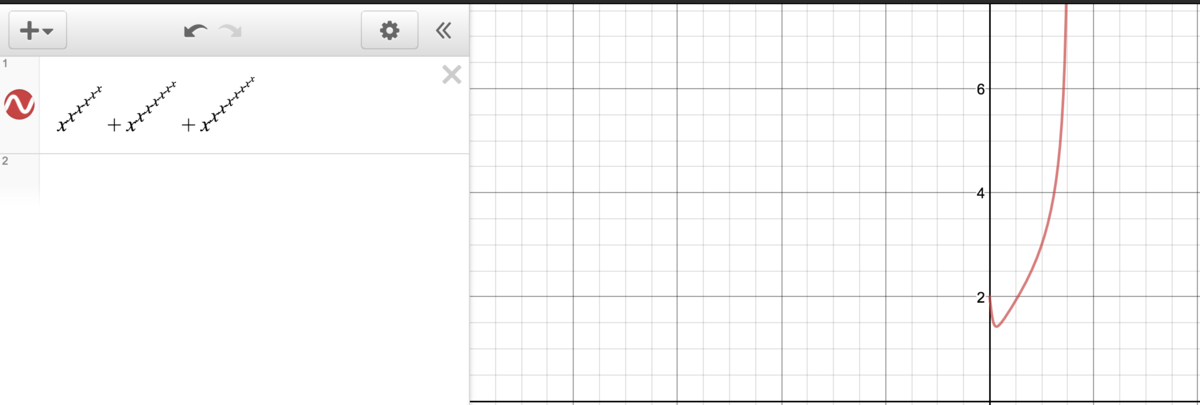Millions of years passed still the same unknown x
f n ( x ) = number of x ’s = n x x x x ⋅ ⋅ ⋅ x
What is x → 0 + lim ( f 2 0 1 6 ( x ) + f 2 0 1 7 ( x ) + f 2 0 1 8 ( x ) ) ?
This section requires Javascript.
You are seeing this because something didn't load right. We suggest you, (a) try
refreshing the page, (b) enabling javascript if it is disabled on your browser and,
finally, (c)
loading the
non-javascript version of this page
. We're sorry about the hassle.
7 solutions
Step 2 under "approach" doesn't look right. I'll be able to elaborate later if necessary, but it looks like you're doing the 0^0=1 error.
Log in to reply
Not neccesary, since lim x^x^x =lim x^1 = lim x. That means lim x^x^x^x = lim x^x, not only x^0. But it probably should be in the proof.
Log in to reply
I should clarify I meant the justification for (2), not that statement (2) itself is incorrect.
Thanks Leszek, Brian, I have included your corrections.
In step 1 why you took 0^1 not 1^0?
Log in to reply
Are you confused in x^x^x?...It is x^(x^x) not (x^x)^x, hence, it should be x^1 not 1^x. :)
Weird, I did not get that result. Let me elaborate on what I got.
If not mistaken, ln(fn(x))=x^(n-1) ln(x) = ln(x) / x^(1-n). For n>1, we can find limit of this expression using l'Hospital rule, i.e. numerator d ln(x)/dx = 1/x and denominator d x^(1-n)/dx = (1-n) x^(-n). Thus, we get (1/x) / ((1-n) x^(-n)) = -x^(n-1) / (n-1). The limit is 0. Ln-inverse gives limit of 1 for n>1. I graphed fn(x) for different values of n in matlab and got that fn(x) approaches 1 from below as x goes to zero from above for n>1. For n=1, the limit is 0, of course.
By ln-inverting the l'Hospital intermediate result "-x^(n-1) / (n-1)" we get exp(-x^(n-1) / (n-1)) which approximates as 1 - x^(n-1) / (n-1) for small x. In Matlab, this approximation shows same convergence rate to 1 as fn(x) itself.
If wrong, can you spot the mistake I made and detail why even and odd n would give different results? Thank you.
Log in to reply
Hi Pierre! Can you please tell me how did you get x^(n-1) in the first line itself? For instance, 2^2^2 = 2^(2^(2)) = 2^4 = 16. I guess you are writing 2^2^2 = 2^2? and then taking log both sides.
Log in to reply
No, just got it that a^b^c = a^(b^c) instead of (a^b)^c=a^(bc). My mistake ... the quiz then gets very simple. Note that Matlab is making same mistake in ^ prioritization.
Log in to reply
@Pierre Carrette – Oh... There is some rule that every language follows; better to incorporate brackets ourselves.
Got it! Just did wrong ^ prioritization ... bugger
The limit of 0^0 from the positive side is 1. However, the limit of 0^0^0 from the positive side is 0^1 or 0. The same applies for any large number of 0's. If there is an even number of 0's, the answer will be 1. If there is an odd number of 0's, the answer will be 0. Therefore, the answer is 1 + 0 + 1 = 2
The limit of a tower with an odd number of x's is 0. We will show this by induction. The base case of one x is obvious. We can see that f 2 n + 1 ( x ) = x x f 2 n − 1 ( x ) The limit of this function will be 0 as well. The limit of an even number of x's is 1. We can see that f 2 n ( x ) = x f 2 n − 1 ( x ) The limit of this function will be 1. The question is asking for the limit of 2 evens plus 1 odd, so the answer is 2.
infact, in f∞(x), x can use in[1/e^e, e^1/e]. because if x approach 0, fn(x) will jump between 1 and 0.when n=1, that lim is 0, and when n=2 that is 1, and when n=3, is 0 again. so when n is odd, that is 0, when n is even, that is 1. so question is 1(2016 is even)+0(2017 is odd)+1(2018 is even)=2.
- Plot x^x function.
- Check Y behavior when adding exp(x).
- Notice function is pair sensitive when approaching to 0.
-
Solve: 1+ 0 + 1 = 2



Start: As lim ( x → 0 ) x x = 1 ,
[let me know if proof needed, it's simple: 1) Take log both sides; 2) Apply L'Hospital's Rule; and 3) Take anti-log.]
Approach:
Now,
1 ) lim ( x → 0 ) x x x = 0 ,
[It's just lim ( x → 0 ) x raised to the power lim ( x → 0 ) x x , i.e., lim ( x → 0 ) x 1 = 0 ]
2 ) lim ( x → 0 ) x x x x = 1 ,
[It's just lim ( x → 0 ) x raised to the power lim ( x → 0 ) x x x , i.e., lim ( x → 0 ) x x = 1 , using-1]
Conclusion:
Similarly, for any power of x , we can determine the limit depending on the number of x in the equation. For even n ( n is the number of x in f ), the limit will always be 1; and for odd n , it will be 0 .
Answer:
1( n = 2016) + 0( n = 2017) + 1( n =2018) = 2
[Note: Each limit is x tending to 0 + .]